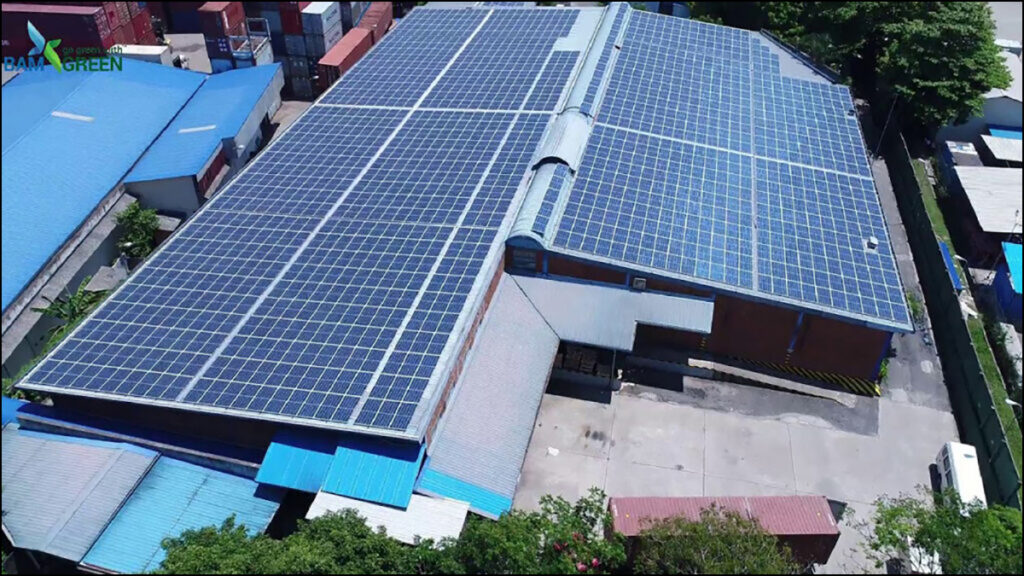As Sri Lanka takes a bold step forward in its renewable energy journey, the country’s deepening commitment to solar energy is fast becoming a beacon of hope for a greener, more resilient economy. With the recent International Solar Alliance (ISA) summit held in Colombo, Sri Lanka reaffirmed its strategic push toward solar — a sector that promises to reshape energy, economics, and the environment.
Why Solar Energy Matters for Sri Lanka
Sri Lanka currently imports over 40% of its energy in the form of fossil fuels, leaving it vulnerable to global market shocks. The shift to solar addresses not only this dependency but also drives a series of national-level benefits:
Energy independence: Local solar production reduces exposure to fluctuating fuel prices.
Affordability: Rooftop solar installations lower household and business electricity bills.
Environmental gains: Solar energy slashes carbon emissions and supports Sri Lanka’s commitments under the Paris Agreement.
Jobs & innovation: The rise of solar creates demand for skilled labour, R&D, and green tech startups.
The government’s “Battle for Solar Energy” campaign targets 70% renewable electricity by 2030, with solar playing a leading role. Complementing this are reforms such as the 2024 Electricity Act, opening up the market for private and foreign investments.
Laugfs Solar Power Portfolio
One of Sri Lanka’s most prominent clean energy investors, Laugfs Gas PLC, offers a model of hybrid solar deployment across utility and rooftop levels:
Ground-mounted plant in Hambantota (20 MW): Built over 90 acres, this utility-scale project adds ~38 GWh to the national grid annually.
Rooftop installations: Laugfs has commissioned over 567 kW across its sites, including its Horana industrial zone (324 kW) and its Colombo HQ (47.5 kW).
Future expansion: The company has called for tenders to build another 10 MW solar plant, expected to generate 22.9 GWh per year.
🎯 Impact: Laugfs’ total clean energy output avoids nearly 30,000 tonnes of CO₂ emissions per year. Their diversified approach shows that commercial solar adoption is viable, scalable, and financially attractive.
Hambantota’s Solar First
Sri Lanka’s first solar park was launched in Buruthakanda, Hambantota, with the help of Japanese and Korean funding:
Phase I (2004): 737 kW capacity, producing 1.3 GWh annually.
Phase II (2012): Additional 500 kW, reaching over 1.7 GWh per year combined.
Outcome: The project helped rural communities gain energy access and demonstrated the viability of solar power in non-urban settings.
Impact: Hambantota proved that solar power could thrive under the right partnerships and policy support — becoming the launchpad for national-scale projects.
The Soorya Bala Sangramaya Movement
This government-led rooftop solar initiative offers net metering, net billing, and net accounting systems. Since its inception:
Over 44,000 systems have been installed.
Nearly 650 MW of rooftop solar capacity is now online.
Households and SMEs are generating their own power and feeding excess into the grid.
Impact: The programme has democratised access to energy production, turning everyday citizens into “prosumers” (producers + consumers).

Future Possibilities: What Comes Next
In addition to these success stories, Sri Lanka is actively exploring innovative solar use cases:
- Agrivoltaics
Using land for both agriculture and solar farming. This dual-use model helps rural communities earn more without sacrificing food production. Crops like chillies, leafy greens, and legumes thrive under partial shading, and solar panels provide protection from excessive heat and wind. - Floating Solar
With its numerous tanks, reservoirs, and hydropower dams, Sri Lanka is an ideal candidate for floating solar panels. These reduce evaporation, cool the panels for greater efficiency, and avoid land use conflicts. ADB and World Bank studies have identified several viable sites across the island. - Green Tourism
Eco-resorts and hotels in the Central Highlands, East Coast, and Southern belt are investing in solar to power operations sustainably. This attracts conscious travellers and earns green certifications, helping the tourism industry recover on a sustainable path. - R&D and Local Innovation
The University of Moratuwa is being promoted as an ISA-backed regional hub for solar research. This could generate patents, cost-cutting innovations, and even a homegrown solar tech industry if properly funded. - Skills & Employment
The solar sector needs technicians, engineers, sales experts, auditors, and maintenance workers. Vocational training centres and universities are now aligning courses to this demand, creating pathways for thousands of green jobs.
Global Partnerships & Green Finance
Sri Lanka is already reaping the benefits of collaboration with:
ISA: Pooling procurement, technology transfer, and knowledge-sharing among 124 member countries.
Asian Development Bank: Funding grid modernisation and floating solar pilots.
World Bank & GCF: Supporting net-metering and hybrid solar microgrid projects in rural areas.
This global backing ensures not just technical expertise but affordable capital for scaling infrastructure.
What Businesses and Investors Should Know
If you’re a local business or investor, now is the time to act:
Tax incentives are available for solar adoption in commercial and industrial setups.
Private–public partnerships are actively encouraged under the Electricity Act.
Green bonds and concessional loans are accessible for large-scale and community solar projects.
Carbon credits from clean energy may soon become tradable as Sri Lanka updates its climate policies.
From large conglomerates like Hayleys and MAS to mid-sized SMEs in food, garments, and retail — solar is becoming the norm, not the exception.
Sri Lanka’s solar journey is more than an energy transition — it’s a transformation in how the country powers itself, balances growth with sustainability, and opens the door to inclusive economic development.
From Hambantota’s early start to Laugfs’ integrated strategy, and now the national rooftop movement, solar is empowering communities, businesses, and future generations. With global backing, smart regulation, and innovative deployment, Sri Lanka is well on its way to becoming South Asia’s solar success story.





